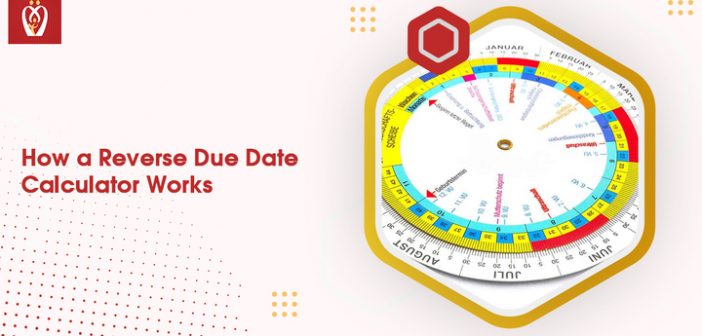Unlike a due date calculator, a reverse due date calculator operates in the opposite direction. The reverse calculator uses the due date of the delivery to determine the window frame in which the woman may have conceived, as opposed to the standard due date calculator, which uses the date of the last menstrual period (LMP) to figure out the due date of delivery. If you’re looking to get an idea of when you could have been pregnant, you can use the reverse due date calculator.
Calculating Due Dates Backwards
It is possible for a pregnant woman to use a reverse due date calculator or reverse conception date calculator to figure out the approximate time of conception if she knows the due date of her baby. With this technique, the pregnancy is tracked backwards from the projected due date to a possible conception window.
A Reverse Conception Calculator’s Purpose and Uses
The GP will normally offer a due date to a pregnant patient when she has her first ultrasound. However, although some women may believe this information, others may be curious about when they may have conceived. The reverse due date calculator comes into play at this point. In today’s world, a reverse due date calculator is essential for a number of other reasons as well. It is time to find out what these things are:
- Women who want to have their kid in a certain month or at a specific time of year may use the reverse conception calculator to figure out when they will conceive.
- Reverse due date calculations by ultrasound may also be used to determine the precise day of conception. Calculating the time of conception is as simple as going to the GP and having the gestation period and due date determined by the length of the last menstrual period (LMP) and the size of the foetus.
- Estimated due dates for delivery are based on the most recent menstrual cycle, which is taken into account. Because not every woman has a 28-day cycle, this approach isn’t always reliable. It is thus helpful in such circumstances to use the reverse conception calculator tool to determine exactly how long it took for the pregnancy to begin.
The Reverse Due Date Calculator Method
If a woman knows when she’s due, it’s easier for her to guess when she was pregnant. However, because the ovulation cycle begins on the 11th day and lasts until the 21st day of the monthly cycle, it is impossible to pinpoint the precise day of ovulation. If you’re looking for a certain day or date, you may use the reverse calendar calculator to go to a time frame instead. As simple as it seems, subtracting the delivery due date from 266 days might be a difficult task. There are many steps involved in calculating the due date from 266 and then removing the difference between that and how many days are in the next month.
Is It Possible to Determine the Date of Birth Using This Method?
When it comes to reverse due date calculators, a lot of expectant mothers are skeptical about their precision. Since the ovulation time for the majority of women occurs between the eleventh and the twenty-first day of the monthly menstrual cycle, pinpointing the precise day of conception may be challenging. Usually, the vast majority of women do not maintain a log or chart of their basal body temperature and cervical mucous. For those that do, the count may be off by a day or more because of inaccuracies.
Limitations
Even though it’s a fantastic approach to pinpoint the exact day and time of conception, further studies are needed to determine how trustworthy and precise the procedure is. It’s a work in progress right now!
Several variables influence the exact day of conception. To begin with, it is important to understand how the due date used to determine the reverse pregnancy due date was computed. Using the latest menstrual cycle as a basis for calculation is not uncommon among medical professionals. If someone has to estimate her LMP, an ultrasound is the best option to find out her due date as soon as possible.
In addition, every woman’s monthly cycle is not exactly 28 days long, so she may ovulate sooner or later than usual. When a woman keeps track of her ovulation cycle and knows exactly when she had intercourse, the process might be simple.
Try the Reverse Due Date Calculator if you’re pregnant and want to discover the date of conception.




